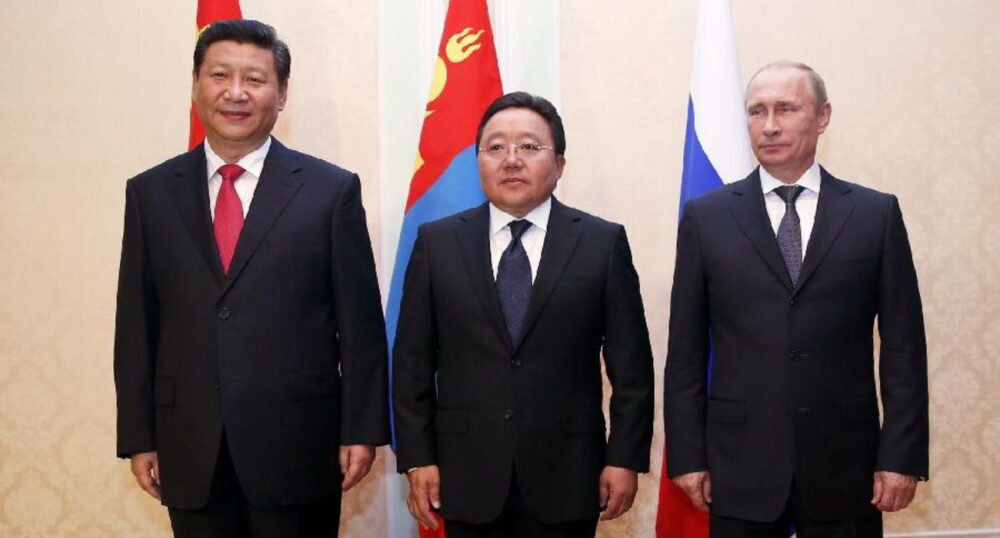Landlocked and isolated in East Asia, Mongolia is bordered by Russia to the north and China to the south. Ethnically inhabited by the Mongols, it is the second largest landlocked country in the world which covers an area of about 15,64,241 square kilometers. According to the Worldometer, Mongolia’s population density is just two per square kilometer, the lowest of any sovereign nation in the world.
Mongolia was divided among various nomadic tribes in the early 13th century. These tribes were organized under the leadership of Genghis Khan and founded the ‘Mongol Empire’ in 1206. This empire at one time became the largest contiguous land empire in history. Then Mongolia was invaded by China’s Qing dynasty and it declared independence from the dynasty in 1911. The ‘Mongolian Revolution’ took place in 1921 with the support of the Red Army of the Soviet Union. As a result, Mongolia became a ‘People’s Republic’, de facto controlled by the Soviet Union.
A referendum was held in Mongolia in October 1945 and almost all voted for the independence of the country. Following this result, China officially recognized the independence of Mongolia. Formal diplomatic relations between China and Mongolia was established on 16 October, 1949. Soviet leader Leonard Brezhnev visited Ulaanbaatar in January 1966 and a friendship treaty was signed between two nations. The Soviet military force was deployed to Mongolia in 1968. The diplomatic relations between Mongolia and China became antagonistic in 1973. Mongolia accused China of carrying out ‘expansionist activities’ and rejected China’s demand for the withdrawal of Soviet military force.
Soviet leader Mikhail Gorbachev announced the withdrawal of Soviet military force from Mongolia in 1986 and all the Soviet troops were withdrawn by mid-1992. In 1990, thousands protested in Mongolia to demand the establishment of a multi-party democracy. This movement of the younger generation became successful and the democratic system was established.
Mongolia is considered as a ‘buffer state’ between Russia and China, two historically rival superpowers. In contemporary international relations, a buffer state can choose among three main strategies to maintain its status:
(1) it may implement a policy of greater neutrality between the rival states;
(2) it may lean towards any one of the superpowers between the rival states;
(3) it may establish an alliance with the third parties.
In the post-Cold War order, Mongolia has pursued the first and third strategies. It is working to maintain the neutral policy between Russia and China, as well as developing diplomatic relations with the United States and other countries.
China’s rise as a global economic and military superpower is both a matter of opportunity and fear for Mongolia. The Belt and Road Initiative project will connect Eastern Europe from China through Mongolia and Russia. As a result, the opportunities of new markets for Mongolia’s mineral resources will be increased. China currently plays an important role in the country’s economy, and about eighty percent of Mongolia’s export sector is dependent on China.
On the other hand, Russia is working to re-strengthen its economic ties with Mongolia. About eighty percent of the fuel oil supplied to Mongolia is imported from Russia and the bilateral trade relation between two nations continues to expand.
According to the current constitution of Mongolia, it maintains a non-alignment policy in national security and foreign relations. At the same time, it maintains mutually friendly and cooperative bilateral relations with Russia and China. Mongolia became a member of the United Nations in 1961 and it has been participating in the UN peacekeeping mission since 2002. It has officially established diplomatic relations with at least 52 countries since the beginning of peacekeeping operations under the UN.
The key point of its balanced diplomacy approach lies in securing cooperation from China on economics while maintaining the alliance with Russia. If domestic political stability and rule of law can be maintained, its economic ties can be expanded to Russia and China, as well as the United States, Japan, South Korea, India, Germany, the United Kingdom, Australia, Canada, and other countries. After the collapse of the Soviet Union, recently Russia and China have been working together to mitigate the United States’ influence in the post-Cold War order. If this relationship between Russia and China continues to strengthen, Mongolia’s geopolitical importance as a buffer state may be decreased.
Developing countries should not afford to build relations with one particular state if it means a deterioration of their relation with other powerful nations. It will be difficult to protect their own interests by spoiling the relationship with anyone.
Considering their geographical location, economic needs and national interests, the developing countries should strive to maintain peaceful relations with all. So they have to do strategic diplomacy here and the diplomacy of Mongolia may be regarded as a pathway for them.


